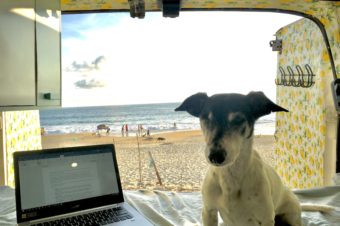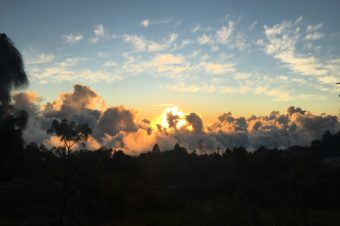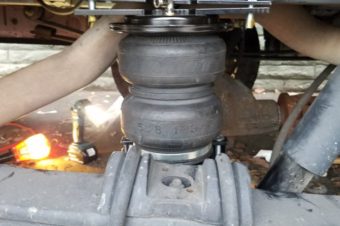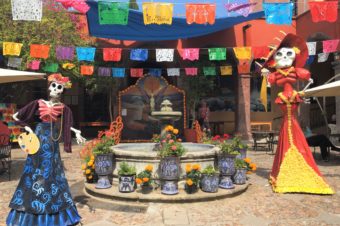In this article, I share with you one of my favorite cultural experiences in San Cristóbal de las Casas:
Learning how to make tamales from scratch in a traditional cooking workshop with the community organization “STEPS in San Cristóbal!”
Are you going to San Cristóbal de las Casas? Don’t miss my comprehensive article, Things to Do in San Cristóbal de las Casas.
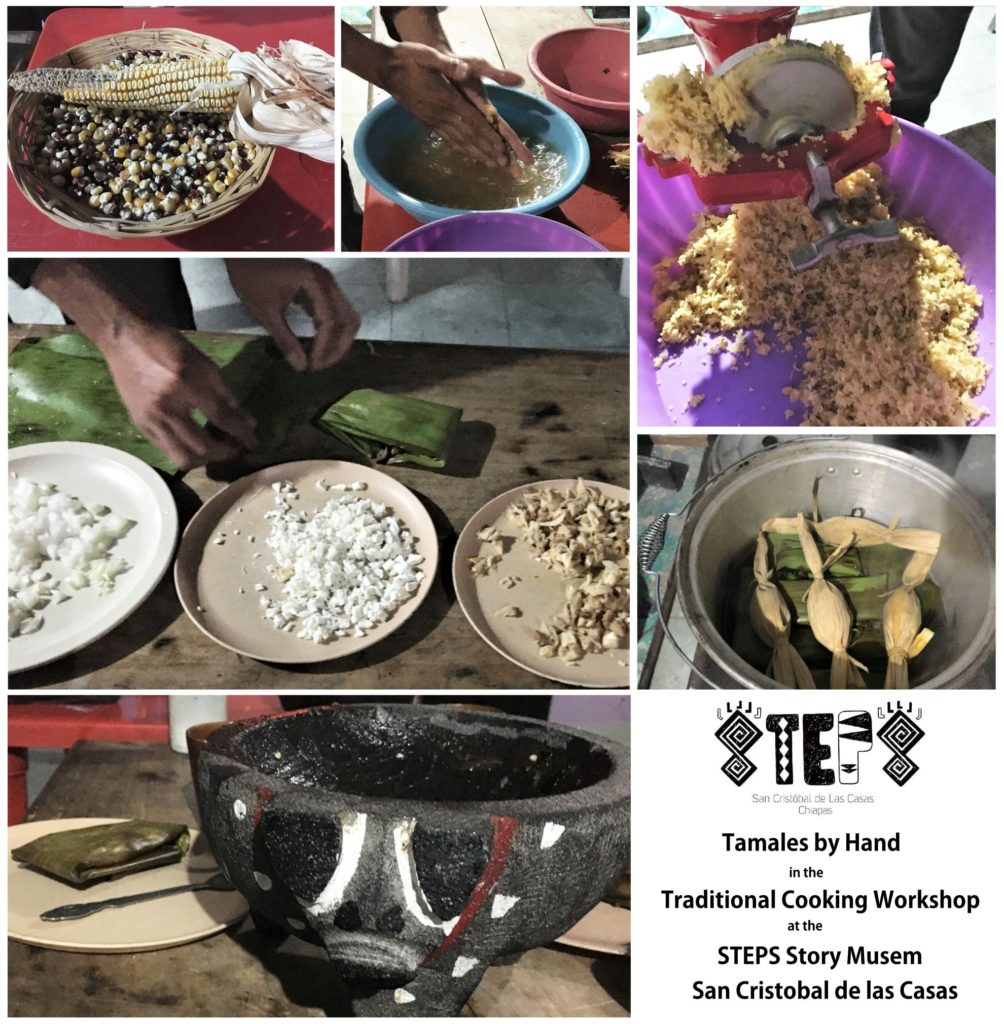
What I Love About the Tamale
To me, the tamale reflects all the best parts of Mexican culture!
The tamale is a genius byproduct of a no-waste lifestyle: chewy, dried corn cooked into a digestible dough, stuffed with any variety of ingredients (hello leftovers!), and wrapped in corn husks or banana leaves that would otherwise be discarded.
The process of cooking the tamale, usually overnight for 6-7 hours, also serves the important purpose of heating the home at night (multi-purpose, check!). Even the water used to wash the cooked kernels gets re-used in watering the garden and feeding the chickens. Nothing goes to waste!
And, of course, the design of the tamale, wrapped into a clean, easy, biodegradable, pocket-sized snack, is perfect for sustaining people on the go. With no additional packaging necessary! Wouldn’t the planet be a better place if all snacks were so guilt-free, environmentally speaking?

STEPS in San Cristóbal
STEPS is a non-governmental organization focused on the cultural preservation of indigenous peoples in and around San Cristóbal. STEPS’s projects support access to education for indigenous communities while helping them to preserve and share their stories.
Among their projects is the collection and translation of indigenous stories (in their respective languages) into Spanish-language children’s books. Through these books, the organization encourages the preservation of indigenous traditions and cultural heritage. These books serve the dual purpose of educating the children of these communities as well as celebrating their stories.
STEPS has a full offering of daily events for folks like you and me:
- 11 am – Traditional Cooking Workshop (lunch)
- 3 pm – Storytime in English
- 5 pm – Storytime in Spanish
- 7 pm – Traditional Cooking Workshop (dinner)
These are family-friendly, fun events designed to educate and engage – take your pick and check them out!
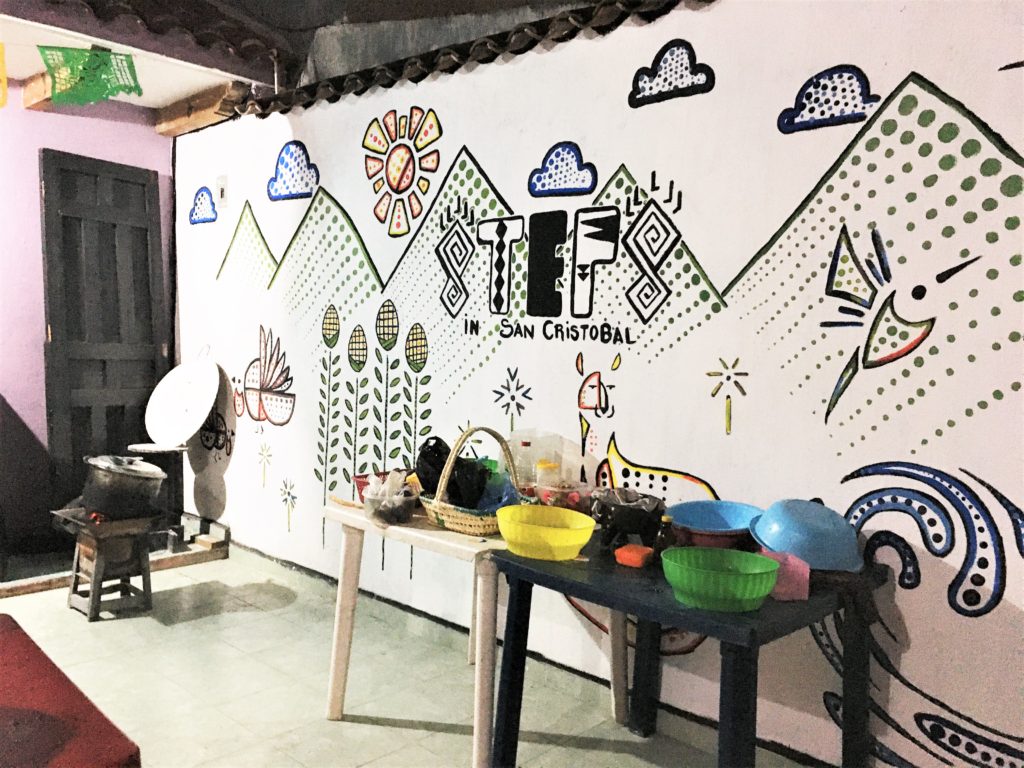
The Evening Cooking Workshop with STEPS in San Cristóbal
I chose to do the evening cooking workshop, led by an awesome STEPS volunteer named Laura. We made a traditional meal of savory and sweet tamales, roasted salsa, and ponche (warm fruit punch), all the while learning about Chiapan food and the local communities. It was a fun and laid-back night of cooking, learning, chatting, and, of course, eating!
The workshop lasts roughly three hours for a small donation of 200 MXN (~10 USD). The required donation amount is so small, but the class so fun and rewarding, that most people end up choosing to contribute more.
The Tzotzil Community
Even more fascinating than making tamales was learning about the indigenous Tzotzil peoples living throughout Chiapas. For example, how chicken isn’t considered meat because it’s not one of the animals on the Mayan calendar! Because of this, chickens and eggs are considered appropriate for religious sacrifice.
Wait… religious what??
Yes, the Tzotzil people have a fascinating belief system that guides their way of life. It involves Catholic Saints, pine needles, copal incense, chicken sacrifices, and even Coca-Cola.
Read all about it in my article, San Juan Chamula: Step into Another World in Mexico’s Most Unique Indigenous Town.
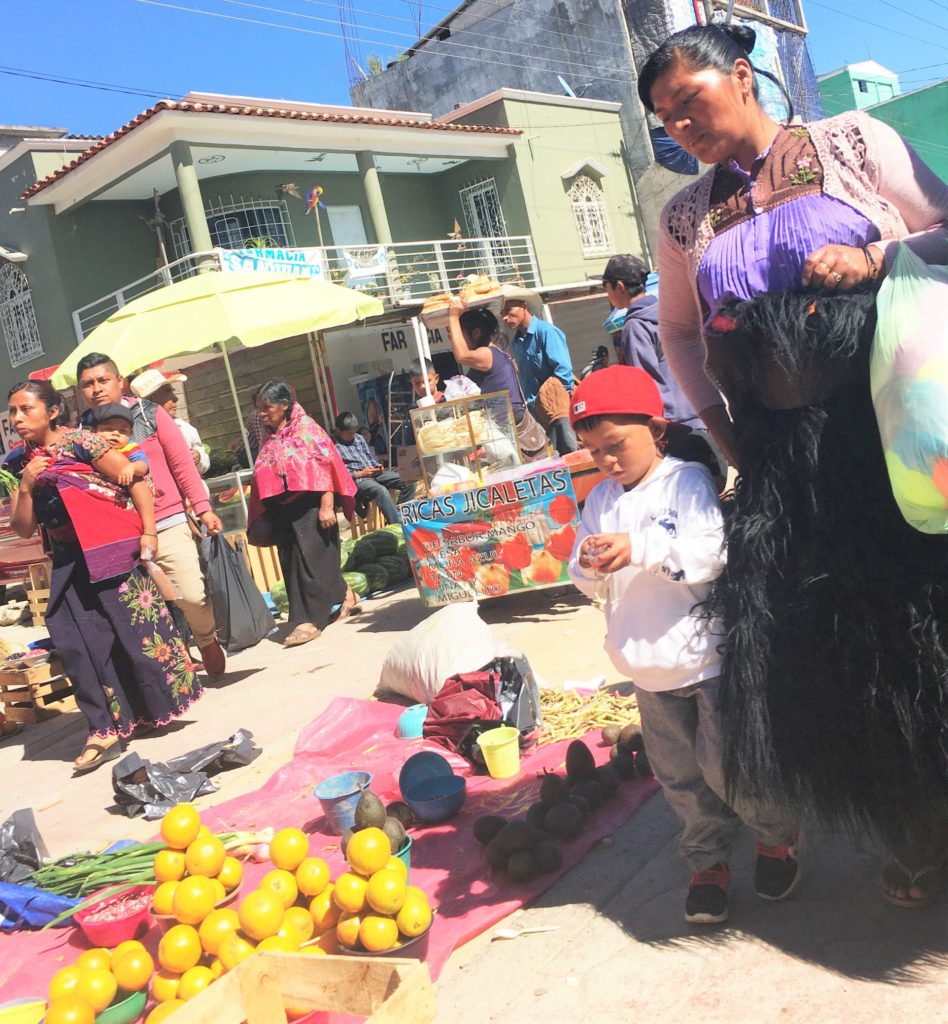
Not Just Tamales
What’s dinner without a side and a beverage? In addition to tamales, we made a roasted tomato salsa and a fruit ponche.
For the salsa, we roasted tomatoes, onion, and jalapeno. We then used a monkey-faced stone molcajete to “mush” the salsa – not the technical term. I always thought making salsa with a molcajete would take forever, but it was surprisingly easy!
For the ponche, we combined water, piloncillo (sugar cane), hibiscus flowers, and diced pineapples, mandarin oranges, and guavas. Thirty minutes later, the ponche was steaming, aromatic, and delicious. We also got a bit of pox (corn alcohol) to add to our mugs.
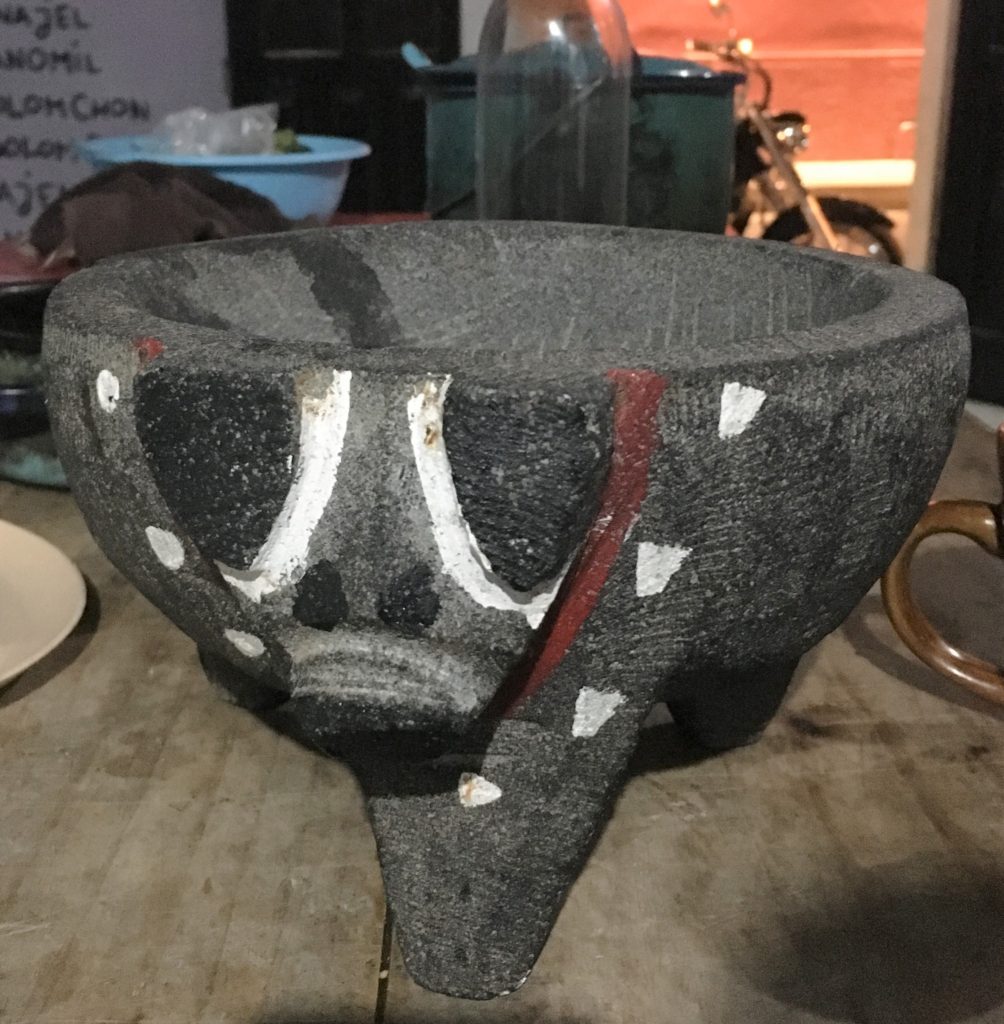
This is What I Call ‘Hands-On Learning!’
I can’t help but share what I learned, so here are some of my favorite tidbits from the workshop.
It’s All About the Corn
There are four colors of corn: red, black, yellow, and white. All of these colors are cooked and eaten, except for red. Red corn (though it often looks purple) is considered a gift from God because it grows whether or not they cultivate it (plant seeds). It is seen to bring health and luck, so you may find dried cobs of red corn hung from doorways and living rooms. This is why you can find black, yellow, and white tortillas, but never red.

Corn has many names in Spanish, depending on the stage of the harvesting and cooking process. For example, dried corn is called mazorca. To remove the dried kernels from the cob, they use a manual desgranadora, a wooden board with a grid of U-shaped metal links.
The dried corn kernels are then added to water and boiled for 6-7 hours. They add a bit of calcium to soften the corn to be more digestible.
Did you know? The use of calcium in corn is one of the top three diseases affecting Chiapecanos – over a lifetime of consumption, too much calcium causes kidney stones to form.
We drained and washed the cooked corn kernels then ground the corn into masa using a hand-cranked mill. (This was my second time using a mill in Mexico – the last time was a bicycle mill to grind cacao for our chocolate bars!)
Making tamales on your own? You can skip all of these steps by buying “masa para pozol” from vendors at the market. Don’t forget to also purchase hojas de maiz, dried corn husks, to wrap your tamales too. Pre-soak in water for 10 minutes before using it.
Masa vs. Maseca
Have you noticed the white, green, and yellow tortillería stores? And signs advertising tortillas hechas en mano, made by hand?
Well, here’s the difference: Tortillas sold in tortillerías use Maseca flour, the world’s leading commercial brand masa that has been dried and ground again into flour. These tortillas, made by machine, come out highly processed and differ from the nutrition, texture, and taste of traditional tortillas.
Tortillas hechas en mano, on the other hand, are made in the traditional manner with real masa as we discussed above. These corn tortillas require much more work, but they are significantly less processed. Participating in the traditional masa-making process, I am now far more inclined to look for traditional hand-made tortillas – call me converted!
Time to Eat!
We ended our time together saying “kolaval” – “thank you” in Tzotzil – to each other before enjoying our tasty meal of steaming hot tamales, roasted tomato salsa, and pox-spiked hot fruit punch.
If there’s anything I hope you can take away from this article, it’s that I highly recommend STEPS’ evening cooking workshop!


More from Dang Good Life
If you’re unfamiliar with vanlife and our DangGoodLife story, here’s the short version: My husband, dog, and I have been driving through Mexico in our 2015 Ford Transit high-roof van. We converted this van into our casa rodante (rolling home) with our own two hands, so it has everything we need to live comfortably on the road. We share our travels through DangGoodLife to help others plan their overland journeys through Mexico.
Spending time in San Cristóbal de las Casas?
Don’t miss my comprehensive article, Things to Do within San Cristóbal de las Casas.
And my vanlife article, Vanlife in San Cristóbal de las Casas, Mexico.
I hope this helps you to prepare for your visit to San Cristóbal de las Casas!
If you have any questions or comments, feel free to contact us at hello@DangGoodLife.com.
If this article has helped you to plan your own adventure in San Cristóbal de las Casas, please consider supporting us by shopping through our affiliate links, sharing this post, and engaging with us on our social media channels. Your support helps us keep gas in the van so that we can continue to provide this Dang Good content.
With sincere gratitude,
Lien & Jon

